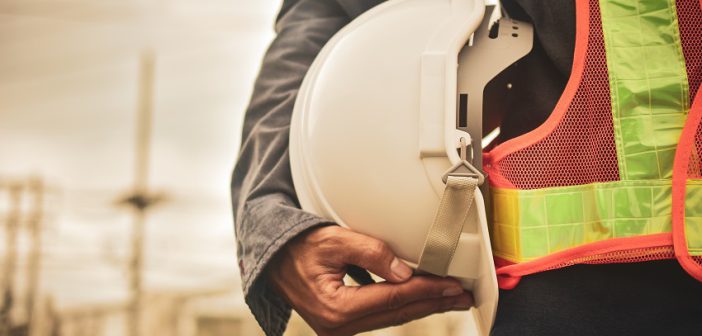The construction industry has evolved significantly over the past decade, with more women entering trades than ever before. According to recent industry data, women now represent nearly 11% of the construction workforce, a number that continues to grow annually. This shift has highlighted a critical need: construction workwear for women designed specifically for female bodies that deliver the same level of protection, durability, and functionality required on demanding job sites.
For too long, women in construction have had to make do with ill-fitting men’s gear or compromise on safety features to find clothing that somewhat fits. Today’s female construction professionals deserve better. They need women’s construction workwear engineered from the ground up to match their body proportions while meeting or exceeding industry safety standards. This guide explores the essential features to look for when selecting women’s construction work pants and other critical workwear pieces that can make the difference between struggling through a workday and performing at peak capacity.
Understanding the Unique Needs of Women in Construction
Women working in construction face distinct challenges that properly designed construction workwear, made for women can help address. The physical demands of construction work require clothing that moves with the body, provides adequate protection, and holds up under harsh conditions. Unlike office attire or casual wear, women’s construction workwear must withstand exposure to rough materials, weather extremes, and repetitive movements throughout long workdays.
The importance of proper fit cannot be overstated. When workwear for women fits correctly, it reduces fatigue, prevents chafing and discomfort, and allows for full range of motion. This is particularly crucial for women, whose body proportions differ significantly from men’s. Hip-to-waist ratios, inseam lengths, and rise measurements all need careful consideration to ensure both comfort and safety on the job site.
Key Safety Features in Women’s Construction Workwear
High-Visibility Options and Requirements
Safety regulations on many job sites require high-visibility clothing to ensure workers remain visible to equipment operators and other crew members. When searching for women’s construction work pants and other construction workwear for women, look for options that incorporate reflective strips or come in high-visibility colors that meet ANSI/ISEA standards. These features become especially critical during early morning, late evening, or low-light weather conditions.
Modern women’s construction workwear manufacturers have developed innovative ways to integrate high-visibility elements without compromising durability or comfort. Some designs feature permanent reflective threading woven directly into the fabric, while others use heat-sealed reflective tape that withstands repeated washing and wear.
Reinforced Areas and Durability Standards
Construction work puts extreme stress on clothing, particularly at high-wear points like knees, seat areas, and pocket edges. Quality construction workwear for women should feature reinforced panels in these critical zones. Look for double or triple-stitched seams, bar-tacked stress points, and heavy-duty fabrics in areas prone to abrasion.
The best reinforcement strategies in women’s construction workwear use materials like Cordura nylon or similar high-performance fabrics strategically placed where they’re needed most. This targeted approach maintains flexibility and breathability while providing exceptional durability where it counts.
Fire-Resistant and Chemical-Resistant Options
Depending on your specific trade, you may need specialized protective features in your construction workwear for women. Welders, electricians, and workers exposed to chemical hazards require clothing that meets specific safety standards. Fire-resistant (FR) fabrics protect against arc flash and flame exposure, while chemical-resistant treatments help repel oils, acids, and other hazardous substances.
These specialized fabrics in women’s construction workwear have come a long way in recent years. Modern FR and chemical-resistant workwear can be surprisingly comfortable and breathable while still providing crucial protection. Always verify that any specialized construction workwear for women meets the relevant safety standards for your industry.
Essential Utility Features for Maximum Productivity
Strategic Pocket Placement and Design
One of the most common complaints about traditional workwear is pocket placement that doesn’t account for women’s body proportions. Quality women’s construction workwear features pockets positioned for easy access while bending, climbing, or reaching. This means slightly higher placement on the thigh and consideration for hip curves that can affect how items sit in pockets.
Beyond placement, pocket design in construction workwear for women matters tremendously. Deep pockets prevent tools from falling out during movement, while specialized pockets for specific tools like hammers, tape measures, or phones increase efficiency. Some innovative designs include magnetic closures or tool loops integrated directly into pocket construction.
Tool Loops and Attachment Points
Efficiency on the job site often comes down to having the right tool at the right moment. Well-designed women’s construction workwear includes multiple attachment points for tool belts, suspenders, and individual tools. These attachment points should be reinforced to handle the weight of tools without tearing or stretching the fabric.
Consider how tool loops and D-rings are positioned in construction workwear for women relative to your natural movement patterns. The best designs place these features where they won’t catch on materials or interfere with bending and lifting motions.
Ventilation and Temperature Management
Construction work is physically demanding, and proper temperature regulation can significantly impact comfort and performance. Look for women’s construction workwear with strategic ventilation zones, such as mesh-lined pockets or breathable gussets in high-heat areas. These features help manage moisture and prevent overheating during intense physical activity.
Some advanced designs in construction workwear for women incorporate phase-change materials or moisture-wicking treatments that actively help regulate body temperature. While these technologies add to the initial cost, they can make a substantial difference in all-day comfort, particularly in extreme weather conditions.
Performance Features That Make a Difference
Stretch Technology and Movement Freedom
Modern fabric technology has revolutionized women’s construction workwear comfort. The best options now incorporate stretch fibers that allow for full range of motion without compromising durability. This stretch should be multi-directional, accommodating bending, squatting, and climbing movements common in construction work.
The key in construction workwear for women is finding the right balance between stretch and structure. Too much stretch can lead to bagging and loss of shape, while too little restricts movement. Premium women’s construction workwear uses mechanical stretch fabrics or incorporates elastane in specific zones where flexibility is most needed.
Moisture-Wicking and Quick-Dry Properties
Working in varying weather conditions means dealing with rain, sweat, and other moisture sources. Advanced fabric treatments in women’s construction workwear help move moisture away from the skin and accelerate drying times. This isn’t just about comfort; staying dry helps prevent chafing, reduces the risk of hypothermia in cold conditions, and maintains the integrity of protective features.
Look for construction workwear for women treated with permanent moisture-management finishes rather than temporary coatings that wash out over time. These technologies work at the fiber level to provide lasting performance through countless wash cycles.
Abrasion Resistance and Tear Strength
Construction environments are tough on clothing. From rough concrete to sharp metal edges, women’s construction workwear faces constant challenges. High-quality construction workwear for women uses fabrics with exceptional tear and abrasion resistance ratings. This often means heavier weight fabrics, but modern textile engineering has produced materials that offer protection without excessive bulk.
Pay attention to fabric weight (measured in ounces per square yard) and construction methods in women’s construction workwear. Ripstop weaves prevent small tears from spreading, while tight weaves resist snagging on rough surfaces.
Getting the Right Fit
Understanding Size Charts and Measurements
Proper fit starts with accurate measurements. Women’s construction work pants sizing can vary significantly between brands, making it essential to consult size charts rather than assuming your usual size will fit. Key measurements include waist, hip, inseam, and rise. Some manufacturers of construction workwear for women also provide thigh and knee measurements, which can be crucial for ensuring comfortable movement.
Take measurements while wearing the type of undergarments you’ll typically wear to work. This ensures the most accurate fit for your women’s construction workwear. If you’re between sizes, consider how you’ll layer clothing and whether you prefer a looser or more fitted style.
Rise Options and Their Impact
The rise of pants (the distance from the crotch seam to the waistband) significantly affects both comfort and functionality in construction workwear for women. Low-rise options may work well for some body types but can expose the lower back when bending. High-rise designs provide better coverage and can be more comfortable for all-day wear, especially when paired with tool belts.
Mid-rise options in women’s construction workwear often provide the best balance for construction work, offering adequate coverage without restricting movement or interfering with tool belt placement. Consider how different rise options work with your body type and work requirements.
Considerations for Plus-Size Options
The availability of plus size construction workwear for women has improved dramatically, but fit considerations become even more critical in extended sizes. Look for brands that grade their patterns appropriately for plus sizes rather than simply scaling up standard sizes. This ensures proper proportions throughout the size range.
Quality plus-size women’s construction workwear should offer the same features and durability as standard sizes. Reinforcement placement, pocket positioning, and stretch zones should be adjusted to work with larger body proportions while maintaining full functionality.
Fabric Technologies and Innovations
Advanced Synthetic Blends
Modern construction workwear for women fabrics have moved far beyond basic cotton duck. Advanced synthetic blends combine the best properties of multiple fibers to create fabrics that outperform traditional materials in every way. These might include polyester for durability, nylon for abrasion resistance, and elastane for stretch.
The latest innovations in women’s construction workwear include fabrics with built-in odor control, UV protection, and even insect-repelling properties. While these features might seem like extras, they can significantly improve comfort and safety during long workdays outdoors.
Sustainable and Eco-Friendly Options
Environmental consciousness has reached the construction workwear for women industry, with manufacturers developing sustainable alternatives that don’t compromise performance. Recycled polyester, organic cotton, and innovative bio-based fibers offer reduced environmental impact while maintaining the durability construction work demands.
Some manufacturers of women’s construction workwear have also adopted water-saving dye processes and reduced chemical treatments. These sustainable practices often result in fabrics that are not only better for the environment but also gentler on skin and less likely to cause irritation.
Caring for Your Construction Workwear
Washing and Maintenance Best Practices
Proper care extends the life of construction workwear for women significantly. Most quality work pants can withstand industrial washing, but following care instructions ensures maximum longevity. Pre-treat stains promptly, wash in cold water when possible, and avoid fabric softeners that can compromise technical treatments.
Turn women’s construction workwear inside out before washing to protect exterior finishes and reflective elements. Using a gentle cycle and avoiding overloading the washer helps maintain garment shape and prevents excessive wear on fabrics.
When to Replace Worn Gear
Knowing when to replace construction workwear for women is crucial for maintaining safety standards. Worn-out gear doesn’t just look unprofessional; it can compromise protection and increase injury risk. Watch for signs like thinning fabric in high-wear areas, failing seams, or damaged reflective elements.
Signs your women’s construction workwear needs replacement:
- Fabric worn thin enough to see through
- Seams pulling apart or showing significant stress
- Reflective tape peeling or no longer visible
- Holes or tears that compromise coverage
- Zippers or closures that no longer function properly
Regular inspection of your construction workwear for women helps identify problems before they become safety hazards. Consider keeping a backup set of essential items to avoid being caught without proper gear when replacements are needed.
Making Smart Investment Decisions
Cost vs. Value Analysis
Quality women’s construction workwear represents a significant investment, but evaluating cost per wear often reveals surprising value. Premium construction workwear for women that lasts two or three times longer than budget options actually costs less over time. Factor in improved comfort, better protection, and increased productivity when calculating true value.
Consider starting with one or two high-quality pieces of women’s construction workwear for your most demanding tasks, then gradually building a complete workwear wardrobe. This approach allows you to experience the benefits of premium gear while managing upfront costs.
Building a Complete Workwear Wardrobe
A well-rounded construction workwear for women collection includes multiple pants options for different seasons and tasks, along with appropriate tops, outerwear, and safety accessories. Having enough pieces to rotate through the week extends the life of each item and ensures you’re never without clean, functional women’s construction workwear.
Think strategically about versatility in construction workwear for women. Convertible pants that zip off into shorts, removable knee pad inserts, and modular pocket systems allow you to adapt your gear to changing conditions and requirements without purchasing entirely separate garments.





Mortice locks provide robust home security, known for their strength and reliability. Just like these dependable locks, Custom Keychains offer a practical yet personal touch—making them the perfect gift for everyone. Whether used for house keys, car fobs, or office access, they blend functionality with sentiment. Ideal for branding or special occasions, custom keychains are thoughtful, everyday essentials that people actually appreciate and use regularly.
hey good one
Finding the right construction workwear for women is all about combining safety, durability, and comfort with a proper fit. It’s great to see more brands recognizing the need for functional gear that supports women on the job site without compromising performance or style.https://topfreisen.at/
General dentistry plays a crucial role in maintaining overall oral health. From routine checkups and cleanings to cavity fillings and preventive care, it helps detect and treat dental issues early. A trusted provider like The Dentist LV offers professional and personalized services tailored to your needs. Their https://thedentistlv.com/services/general-dentistry-service/ ensures a healthier smile and long-term oral hygiene. Whether it’s a simple exam or a more complex procedure, visiting a general dentist regularly helps prevent serious dental problems. Take the first step towards a healthier mouth with expert care that puts your comfort and health first.
Granite State Crane operates a powerful fleet of machines designed for heavy lifting jobs across various industries. From boom trucks to all-terrain cranes, their lineup is built for performance and precision. Known for dependable service in construction and industrial settings, the company supports complex lifts with modern technology and experienced crews. Their commitment to safety and efficiency makes them a strong choice for crane and rigging NH MA projects. Whether urban or remote, Granite State Crane brings dependable equipment to every job site.
In my experience, women’s construction workwear must balance durability, safety, and comfort without compromising fit. I swimming pool tanning ledge prioritize reinforced fabrics, functional pockets, and proper protective features. When workwear is designed with women in mind, it enhances performance, reduces fatigue, and ensures I can work efficiently while feeling confident and well-protected.
Performance means the clothing should withstand tough job site conditions while still allowing flexibility and comfort. Just as professionals compare benefits in other industries, like analyzing web developer pay when choosing career paths—women in construction should evaluate their workwear based on protection, practicality, and long-term value.